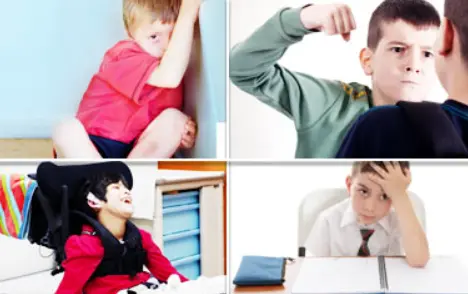Understanding Your Child’s Behavior: A Guide to Common Behavioral Disorders
Every child throws a tantrum sometimes, refuses to share, or struggles to focus in class. But how do you know when these behaviors become a sign of something more significant? This blog post will equip you with the knowledge to recognize common behavioral disorders in children and guide you toward getting the help your child needs.
Distinguishing Normal Development from Behavioral Disorders
Young children are constantly learning and developing. They may exhibit challenging behaviors as they navigate emotions, test boundaries, and learn to interact with the world around them. However, some behaviors can be indicative of a deeper issue. Here’s how to tell the difference:
-
Frequency and Intensity: Occasional outbursts are normal. If challenging behaviors are persistent, severe, or interfere with daily life, it might be a cause for concern.
-
Developmental Stage: Consider your child’s age and typical development patterns. For instance, occasional defiance is expected in toddlers, but persistent aggression might warrant further evaluation.
-
Impact on Functioning: Does the behavior significantly impact your child’s ability to learn, socialize, or complete daily activities?
Common Behavioral Disorders in Children: Understanding the Spectrum
Here are some of the most common behavioral disorders in children:
-
Attention Deficit Hyperactivity Disorder (ADHD) is characterized by inattention, hyperactivity, and impulsivity. Children with ADHD may struggle to focus, be easily distracted, and fidget constantly.
-
Oppositional Defiant Disorder (ODD): Involves a pattern of negative, defiant, and argumentative behavior towards authority figures.
-
Conduct Disorder (CD): More serious than ODD, CD involves a pattern of aggressive and destructive behavior towards others and property.
-
Anxiety Disorders: Children with anxiety disorders experience excessive worry, fear, and physical symptoms like stomachaches or headaches in response to perceived threats.
-
Autism Spectrum Disorder (ASD): A developmental disorder that affects social communication and interaction. Children with ASD may have difficulty with social cues, repetitive behaviors, and restricted interests.
If You See Signs of a Behavioral Disorder: Taking Action
If you suspect your child may have a behavioral disorder, here are the steps to take:
-
Talk to Your Child’s Pediatrician: Discuss your concerns and request a referral for a comprehensive evaluation by a mental health professional.
-
Seek Professional Evaluation: A diagnosis can help you understand your child’s challenges and develop a treatment plan.
-
Explore Treatment Options: Treatment for behavioral disorders may include individual therapy, family therapy, behavior modification techniques, and sometimes medication (depending on the diagnosis).
-
Early Intervention is Key: The earlier a behavioral disorder is addressed, the better the long-term outcomes for your child.
Remember, You’re Not Alone: Resources and Support
Conclusion: Empowering Your Child
Understanding behavioral disorders empowers you to advocate for your child and get them the support they need. Remember, with early intervention, treatment, and ongoing support, children with behavioral disorders can thrive and reach their full potential. So, don’t hesitate to seek help, and know that you are not alone on this journey.


Comments are closed, but trackbacks and pingbacks are open.